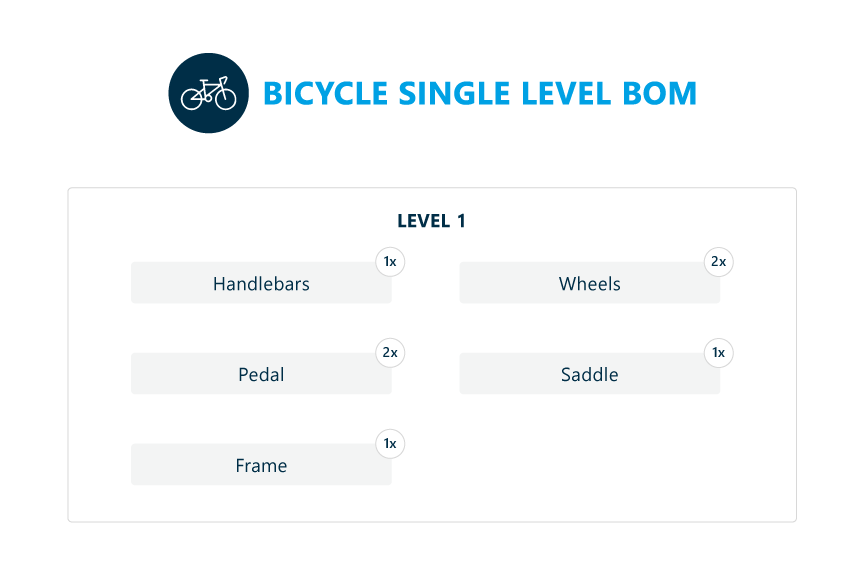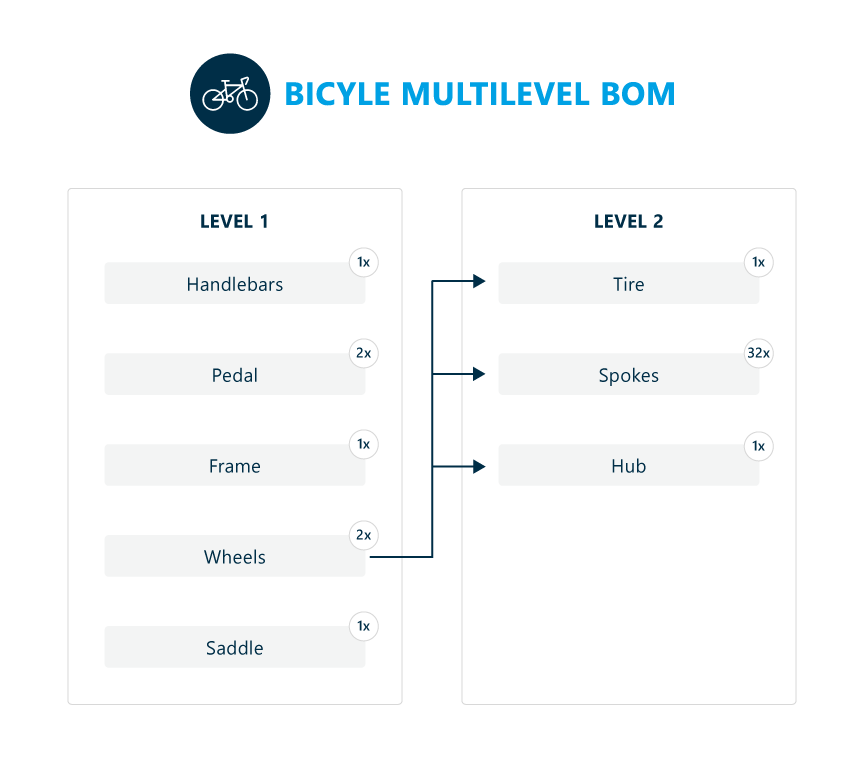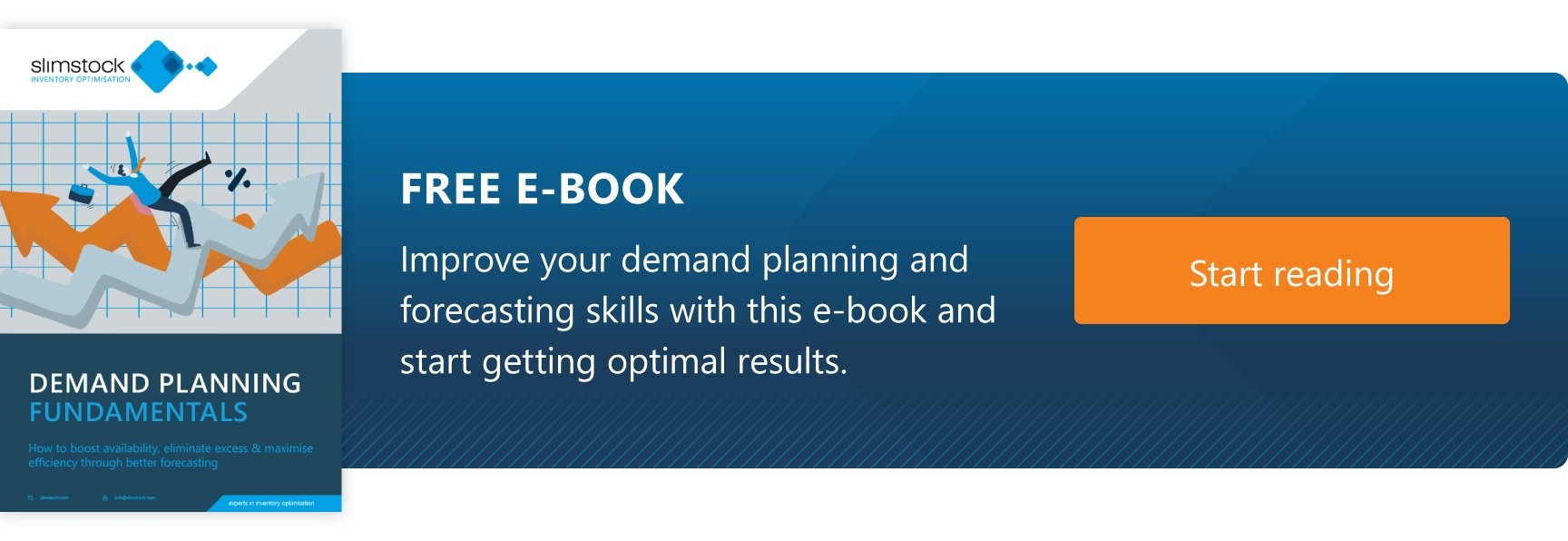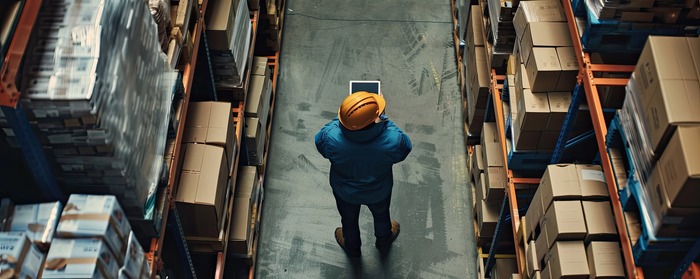Table of contents
Table of contents- Bill of Materials Demystified
- What is a Bill of Materials (BOM), and how can it help you unlock efficiency gains throughout your manufacturing process?
- Lets start with the basics on bill of materials
- What information does a bill of materials contain?
- What are the benefits of an accurate bill of materials?
- Best practices for bill of materials Management
- How can you use bill of materials to plan with precision?
- Automation is a must for complex production processes
- Bill of materials (BOM) FAQs
What is a Bill of Materials (BOM), and how can it help you unlock efficiency gains throughout your manufacturing process?
In today’s dynamic manufacturing landscape, where precision, efficiency, and cost-effectiveness are paramount, it’s crucial to grasp the fundamental building blocks of production.
Manufacturing environments are unique. As a result, their operations differ significantly compared to their wholesale distribution and retail counterparts. As such, the supply chain processes that underpin manufacturing companies must encompass some specific elements such as Bill of Materials (BOM), Master Production Planning (MPS) and Materials Requirements Planning (MRP).
This article delves into one of these critical manufacturing components: the Bill of Materials. We’ll explore its definition and unravel all the elements that make it up. More importantly, we will explore how adopting a more effective approach to BOM management can help unlock efficiency gains throughout your operation.
Lets start with the basics on bill of materials
A Bill of Materials (BOM) is an essential source of information used in manufacturing processes that details the complete list of components, materials and semi-finished products required to assemble a finished product. It provides a guide listing all the elements needed to ensure a smooth manufacturing process, including quantities and descriptions. Ultimately, the BOM offers an accurate picture of what is required in order to manufacture a finished product.
The BOM is crucial to ensure consistency in production, minimise errors and wastage of materials, and facilitate planning and effective inventory management. But more importantly, the BOM helps ensure quality and accuracy throughout the manufacturing process.
However, the level of complexity of the Bill of Materials can vary greatly. The list of materials can be very broad and diverse in companies with complex production processes – such as in the electronics or aerospace industry. On the other hand, the BOM for manufacturing a simple product will be far less complex.
What information does a bill of materials contain?
Again, the information found in the BOM will be significantly different depending on the complexity of the product in question. In this sense, we can differentiate between single-level BOM for simple products and multi-level BOM for more complex products. Let’s explore the characteristics of each further:
Single-level BOM
Simple Structure
Only the components directly used to manufacture the final product are listed in a single-level BOM. These parts make up the final product without reflecting the sub-components.
Simple visualisation
This type of BOM is simpler and easier to visualise than the multi-level BOM. It’s well-suited for less intricate products or when the goal is to swiftly identify a product’s primary components with ease.
Multilevel BOM
Hierarchical structure
In a multi-level BOM, all components needed to manufacture a product are detailed, including raw materials, sub-components, principal components and, of course, the final product. This more detailed BOM shows the structure through multiple levels of depth, allowing a detailed view of how products are assembled.
Increased complexity
A multi-level BOM is typically far more complex. It offers a more detailed view of the component structure, which is especially useful for highly complex products or products that include assemblies within assemblies.
The BOM may also encompass details about components that go beyond the required quantity for assembling the end product, such as:
- Supplier
- Delivery lead time
- Unit cost of the component
- Images of the component
- Notes or assembly instructions
- Status or on-hand availability
The list could go on and on to include as much detail as desired.
What are the benefits of an accurate bill of materials?
We have already seen what a BOM is and what information it should contain, but what is the ultimate goal? The answer is simple: to ensure the production process is as efficient as possible.
However, here are some of the other advantages that come with maintaining an up-to-date BOM.
Enhanced visibility
A well-defined BOM creates visibility for all internal stakeholders involved throughout the manufacturing process. The BOM provides a clear picture of an item’s components, associated costs, and all the data encapsulated within the bill of materials. More importantly, the BOM can be shared with suppliers whose components play a role in the manufacturing process, fostering enhanced transparency and better collaboration.
Improved efficiency and waste reduction
Greater visibility results in more accurate inventory management. Providing a clear view of the components required reduces the likelihood of overstocking or understocking. Consequently, the risk of excess inventory, obsolesce, and bottle-necks is mitigated.
Accurate cost control
Detailed information on components and their unit costs enables accurate calculation of the total cost of production. This will help to set competitive prices, stay within budget and maximise profit margins.
A real customer example: Itho Daalderop optimises its manufacturing process to tackle soaring energy costs
Itho Daaldrop is a leading manufacturer of heat pump systems. With an extensive range of parts and components comprising over 6,000 items sourced from 600 different suppliers, BOM is critical to helping the business manage the complexity of its operation.
Following the successful adoption of Slim4, the company achieved a remarkable 15% reduction in stocked components, resulting in significant cost savings.
This strategic decision has proven especially critical in the face of recent surges in energy costs. By curbing production expenses, the business has mitigated the impact of rising energy costs, which have disproportionately burdened manufacturing companies, given their substantial electricity consumption.
Best practices for bill of materials Management
To make the most of your BOM and keep it effective over time, it’s essential to follow some fundamental guidelines. The BOM isn’t a static document; it needs ongoing review. Here are some key criteria for maintaining an optimised BOM:
Continuous maintenance
Consistently update the BOM to align with shifts in design, materials, production processes, or fluctuations in component and raw material costs. This proactive approach safeguards against outdated information and guarantees the BOM’s perpetual accuracy.
Automate the maintenance process
BOM data is dynamic. Consequently, manually updating the BOM is cumbersome and even unfeasible in complex production environments. You can proactively track, adapt, and validate the BOM by leveraging advanced supply chain planning technology that integrates seamlessly with enterprise resource planning (ERP) systems.
Define a clear hierarchy
Organise the BOM in a hierarchical structure that clearly and unambiguously reflects the relationship between components and sub-components. This makes it easier to understand how products are assembled and what materials are required.
Specify the unit of measurement
Everyone must be on the same page when it comes to supply chain planning. Therefore, the unit of measurement for each component should be specified (e.g. units, pieces, metres, kilograms, etc.).
The devil is in the detail
The BOM must provide sufficient detail to support effective decision-making throughout the manufacturing process. By documenting technical specifications, assembly instructions, quality requirements, and all the other required insight, the BOM will prove an asset for all stakeholders.
Don’t neglect supplier details
Add information on the suppliers or sources of each component. This will facilitate an efficiency procurement process.
Access control
As we have seen, the BOM is a sensitive resource. Therefore, there should be clear protocols around who can edit it. Furthermore, changes to the BOM should be logged and reviewed to prevent costly errors further down the line.
How can you use bill of materials to plan with precision?
Accurately predicting forecasted demand stands as a central challenge for supply chain professionals. When forecasting demand for a finished product, it becomes imperative to consider various factors, including historical sales, seasonality, product life cycle, exceptional events, promotional activities, etc.
However, in the case of forecasting demand at each level of the BOM, the demand forecast must consider all semi-finished products, components and raw materials necessary to manufacture the final product. Therefore, the complexity is multiplied.
Large number of components
A BOM often comprises numerous components, each with its unique demand profile. This adds a layer of complexity to forecasting, as it necessitates anticipating the needs of multiple elements to assemble the final product, and some of these components may feature in more than one BOM.
Dependence on demand on finished product level
BOM forecasting is intricately linked to the demand for the finished product. Any shifts in the final product’s demand directly impact component requirements, necessitating tight coordination and adjustments in the forecasting process.
Variability of delivery times
Components within the BOM are typically sourced from various suppliers, each having its unique lead times. Your planning process must consider these variable lead times to prevent production disruptions. In cases of demand fluctuations, the more components involved in the forecast, the greater the risk of production issues.
Increased risk of excess inventory
The intricacies of forecasting components within the BOM heighten the potential for excess inventory if not managed carefully. Therefore, careful planning is essential to avoid accumulating unused components or inventory obsolescence.
Automation is a must for complex production processes
It might be possible to manually create a BOM for a simple product like a ceramic mug. However, manufacturers producing just one product with a minimal number of materials are extremely rare.
Most manufacturing companies must deal with more complex processes, translating into complex BOMs covering many levels.
Given the complexity of these bills of materials, businesses need advanced technology to manage all the parts, how much of each is required, and proactively deal with any issues with the suppliers. Of course, this must be achieved while ensuring we don’t have too much or too little in stock.
With all this in mind, if you are a manufacturer and your production processes involve a certain degree of complexity, you must automate the management of your BOM to keep your process as smooth and efficient as possible.
Bill of materials (BOM) FAQs
What is the purpose of a BOM?
The primary goal of a Bill of Materials (BOM) is to offer a well-structured and comprehensive overview of all the components and materials needed for the manufacturing process. This simplifies the planning process of material procurement and helps control production costs, ultimately ensuring efficient and precise management.
What information does a BOM contain?
Some of the most common data that are usually included are Component reference number, description, quantity required to manufacture the product, supplier or unit cost.
Does the BOM include packaging?
As the purpose of the BOM is to outline the components for a final product, and packaging is an integral part of the product that reaches the customer, the BOM must incorporate the packaging as well.
What is the difference between a single-level BOM and a multi-level BOM?
A single-level BOM lists only the direct components needed for a product, while a multi-level BOM includes both direct components and the sub-components needed to assemble those direct components. The multi-level BOM shows a more complete assembly hierarchy.









